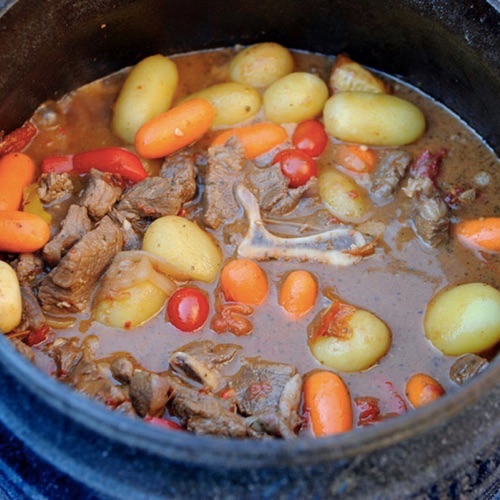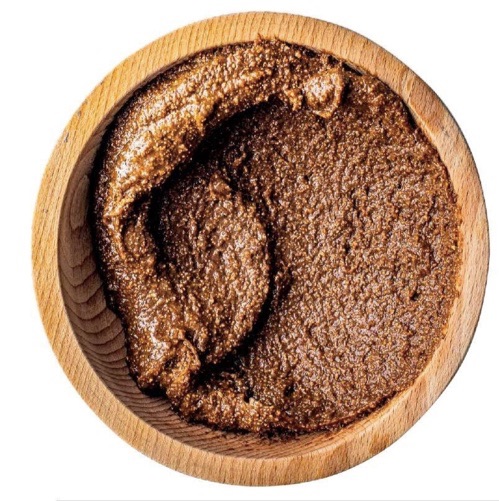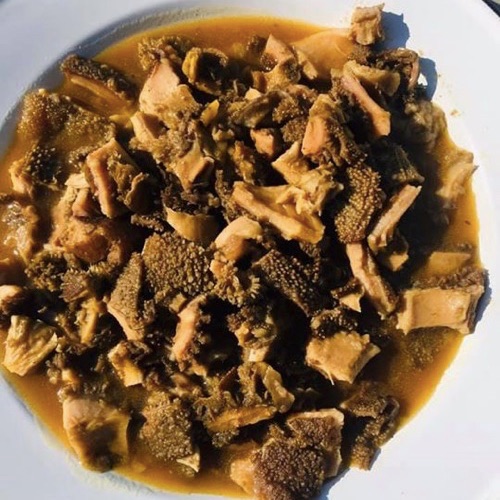Ndebele traditional food is typically rich, simple to make, and full of different natural flavours. The older generations mostly teach the traditional cooking methods to the younger ones.
Even though contemporary cooking skills and ingredients exist now, many old techniques are still utilised today. Read on to learn more about the most popular Ndebele dishes.
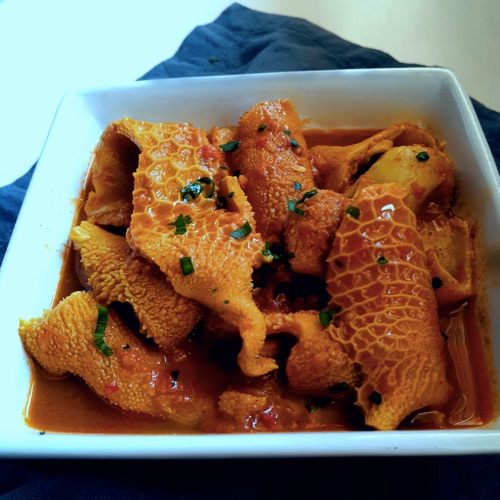
Popular Ndebele Traditional Food
If you’re looking to try something new and exciting, why not sample some traditional Ndebele foods? Below are 10 of our favourite recipes for you to enjoy.
Amadumbe
Amadumbe is a herbaceous, tropical root crop eaten by the Ndebele people and others across South Africa. It waswas classically cultivated as a staple food; but now, it’s used to make other dishes such as: crisps, Amadumbe flakes, curry, and an Amadumbe and spinach pizza base.
You can cook and eat madhumbe in several ways, but the most popular methods are boiling or lightly frying over low heat for a few minutes. You can also grind it into powder form and mix it with sadza flour to make a nutritious meal that is often served with meat, sour milk, or collard greens.
This ingredient is also used as flour in making healthy bread. Amadumbe can go with chicken and coconut milk soup, stew, sauce, vegetables, or served as porridge. It can be prepared in various ways. The dish is widely grown across the African continent and can be eaten with any good drink or local wine.
Umxhanxa
Umxhanxa is a Ndelebe traditional food that consists of yellow watermelon (iJodo), sun-dried maize, and sugar. Although the Ndebele people are the dish’s primary preparers, Kalanga people also enjoy it. Umxhanxa is unique in that it is a seasonal food mostly served for lunch after winter harvest.
The process begins with boiling the maize for two and a half hours, until the hard grains soften. There has not been much modification to how this traditional Ndebele dish is prepared. These days most people use honey or other sweeteners instead of sugar. The cooking process remains unchanged.
Umxhanxa is a Ndebele traditional food that can be enjoyed with local drinks such as amasi, wine, and beer. It can either be eaten alone or combined with other foods according to the person’s preference. Umxhanxa is very nutritious and its ingredients are not very expensive, which makes it a common dish in many households.

Mutakura
Mutakura is a wholesome dish that consists of sugar beans, peanuts (Nzungu), maize (Chibage), Bambara nuts (Nyimo), and cowpeas (Nyemba). It’s very nutritious because it contains carbohydrates and protein. It can be prepared many ways, like with corn and beans or hominy (samp).
To make Mutakura, soak the peanuts, beans, maize and Bambara nuts overnight. In the morning, combine them and boil for several hours until tender. The dish can be taken with a cup of tea or local wine. It can also be eaten with meat, amasi or beer
The way Matakura is traditionally cooked has since changed. It can be prepared in various ways depending on what the cook wants.
Matumbu
Matumbu, also known as variety meats, are the nonmuscular parts of beef and veal carcasses, mutton and lamb, and pork. They can be eaten directly or used to prepare other dishes and is a popular Ndebele food.
The Ndebele tribe typically cooks with less-desirable animal parts such as the liver, kidney, stomach, heart, tripe, and intestines. This meal is called Matumbu and usually also consists of amaphaphu, amathumbu, ulusu ,isibindi ,utwane ,and umbendeni .
Offal can be eaten with either beer or wine. It is a popular food among locals and tourists alike. The dish has evolved over the years to become what it is today – a variations of the traditional Offal recipe, made with different ingredients depending on the cook’s preference.
Mazondo
A staple of Ndebele traditional food is Mazondo. This meal is healthy and made by boiling cow heels then adding garlic, black pepper, and salt. For extra flavor, chopped onions and tomatoes can be thrown in and cooked over an open flame.
Mazondo is a dish originally served with Sadza and collard greens, though it has been adapted to be eaten with stew or sauce over the years. It goes well with any good drink, such as Maize meal (Maheu/Amahewu), Masese/Umqomboti (African Beer), or even water. This food is easy to cook and can also be eaten alone.

Amacimbi
Innondo is a common source of protein and nutrients for the Ndebele people and other tribes located in Southern Africa. The worms are large caterpillars that are collected during the rainy season, cleaned, and then sun-dried to preserve them. These brightly colored worms mainly feed on the leaves of mopane trees.
The mopane worm has been a delicacy since the 19th century and is still being consumed today. This common Ndebele food, especially among rural dwellers, can be eaten in various ways: as a snack or added to maize porridge or drenched in sauce.
In addition, ingredients like onions, garlic, peanuts, tomatoes and chilies can be combined to make the worms more palatable when frying them. This protein-rich dish can be eaten fresh and raw from a tree, added to a stew or simply boiled.
The mopane worm is a traditional Southern African dish that has been passed down through the years. Each Ndebele person has their own way of preparing it, so there is no one specific recipe. The dish can be enjoyed with any wine or drink, modern or local.
Isitshwala
Isitshwala, a popular Ndebele traditional food, is often made from maize flour porridge. It can be mixed with sorghum flour and millet or cassava flour to create a dough-like consistency before being boiled in water or milk.
Isitshwala is a food eaten by the Ndebele people, which is also popular in other parts of Africa under different names. The dish does not require many ingredients or much time to make.
Isitshwala can last for days under average conditions and can be served in many ways, such as with vegetable stew, fish, various meats, soured milk, natural yogurt, soup, etc. It can also be eaten with Mopane worms (a type of caterpillar), okra pumpkin , sugar beans , cow hoof , oxtail , etc.
The method of preparing and even eating Isitshwala in Ndebele has changed over time. Nowadays, people prepare it by dipping it into various condiments like stewed vegetables or sauce/gravy after rolling it into a ball.
In the past, share one big bowl was common, but today each individual has their own dish. Isitshwala goes great with either local wine or amasi (a fermented milk that tastes a bit like yogurt). Ndebele’s traditionally eat this meal by hand, sono utensils needed.
Inopi
Smooth and comforting, Inopi is a traditional Ndebele porridge made from maize meal and ijodo (a type of melon local to the area). It’s often cooked for special occasions because of its luxurious texture. Perfect for chilly winter mornings!
You can make this dish in different ways, depending on your preferences. Inopi is usually served with warm milk to add a creamy texture and delicious taste.
Inopi goes great with beer or wine, and the combination is out-of-this-world. It can be served many ways too: with buttermilk, heavy cream, sugar (usually sprinkled on top), etc. This dish works as a side to meat or vegetables or it could even be eaten alone. It’s that good!
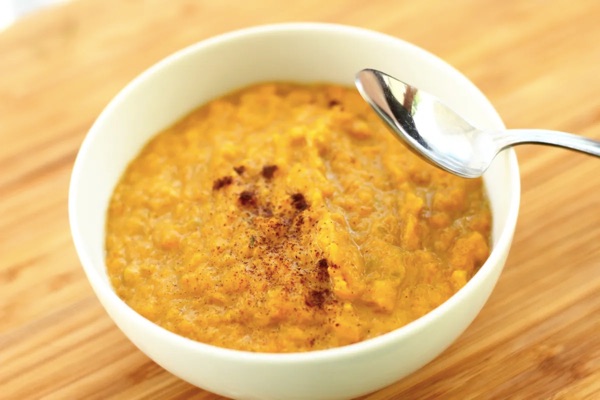
Idelele
Delele is a traditional Ndebele dish made with delele (okra), pumpkin leaves, and other ingredients. It’s a staple in nearly every home in the tribe because it’s so healthy and delicious. Delele goes well with rice, maize meal, and other traditional dishes. Some people also like to eat it on its own.
You can now make umqombothi in different ways, which is vastly different from how it was done in the past. The dish is commonly served at home or during Ndebele events like traditional weddings. Any good drink will help wash this food down anytime.
Izinhlwa
A type of insect cuisine called Izinhlawa is popular among the Ndebele people. Usually, children catch them at night because they are attracted to light. Once caught, adults clean and fry them in a lightly oiled pan until they become crunchy.
Izinhlwa can be served with the traditional staple food Isitshwala (cooked maize meal) or vegetables. The food insects can also be eaten raw, while others prefer consuming them roasted, dried, and are sometimes added to other foods.
Izinhlwa is a popular Ndebele food that makes for a delicious afternoon snack. It can be eaten on its own or with sides like amasi or local wine. There are various ways to prepare izinhlwa, and modern ingredients can be added during preparation to make it even tastier.

